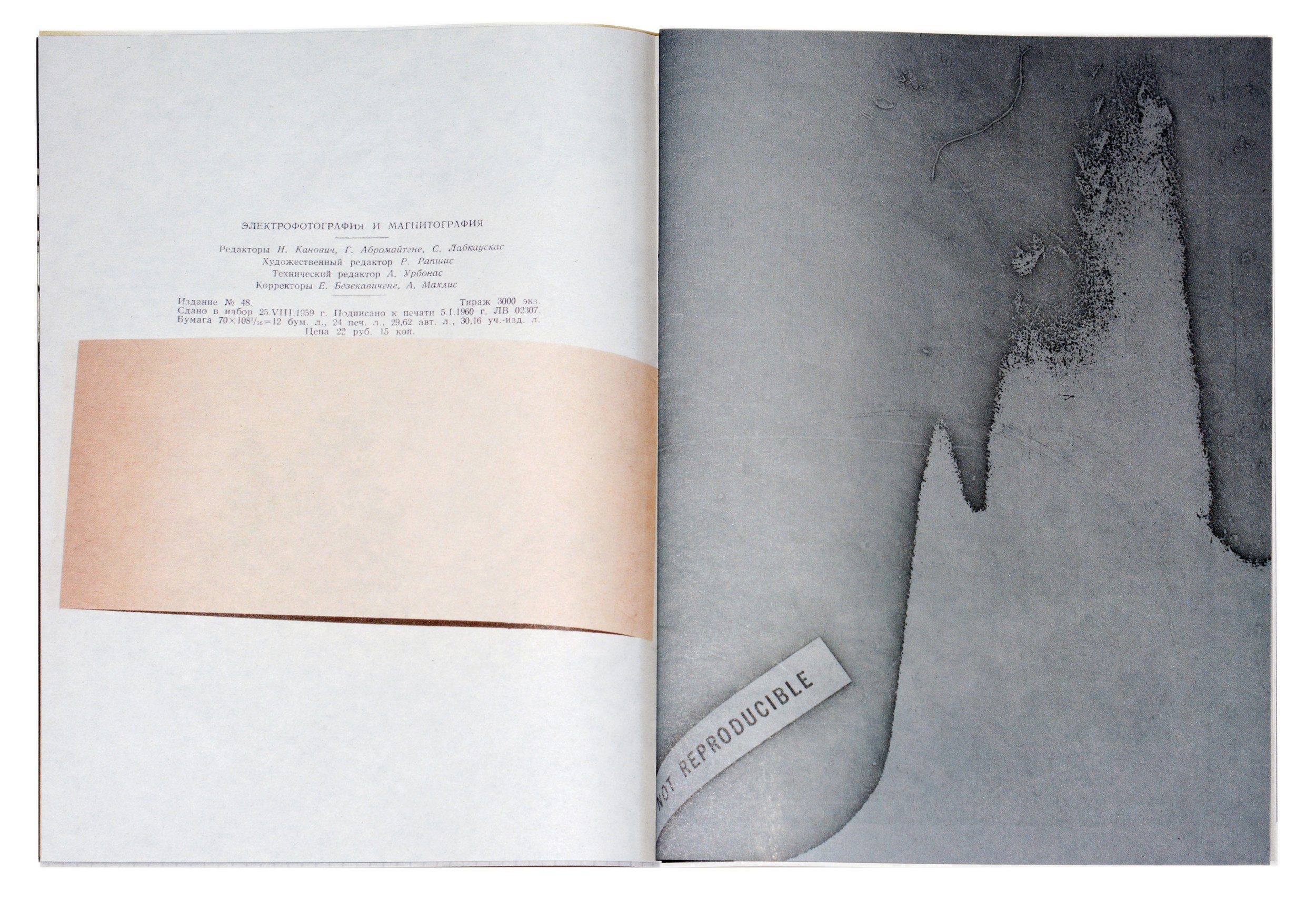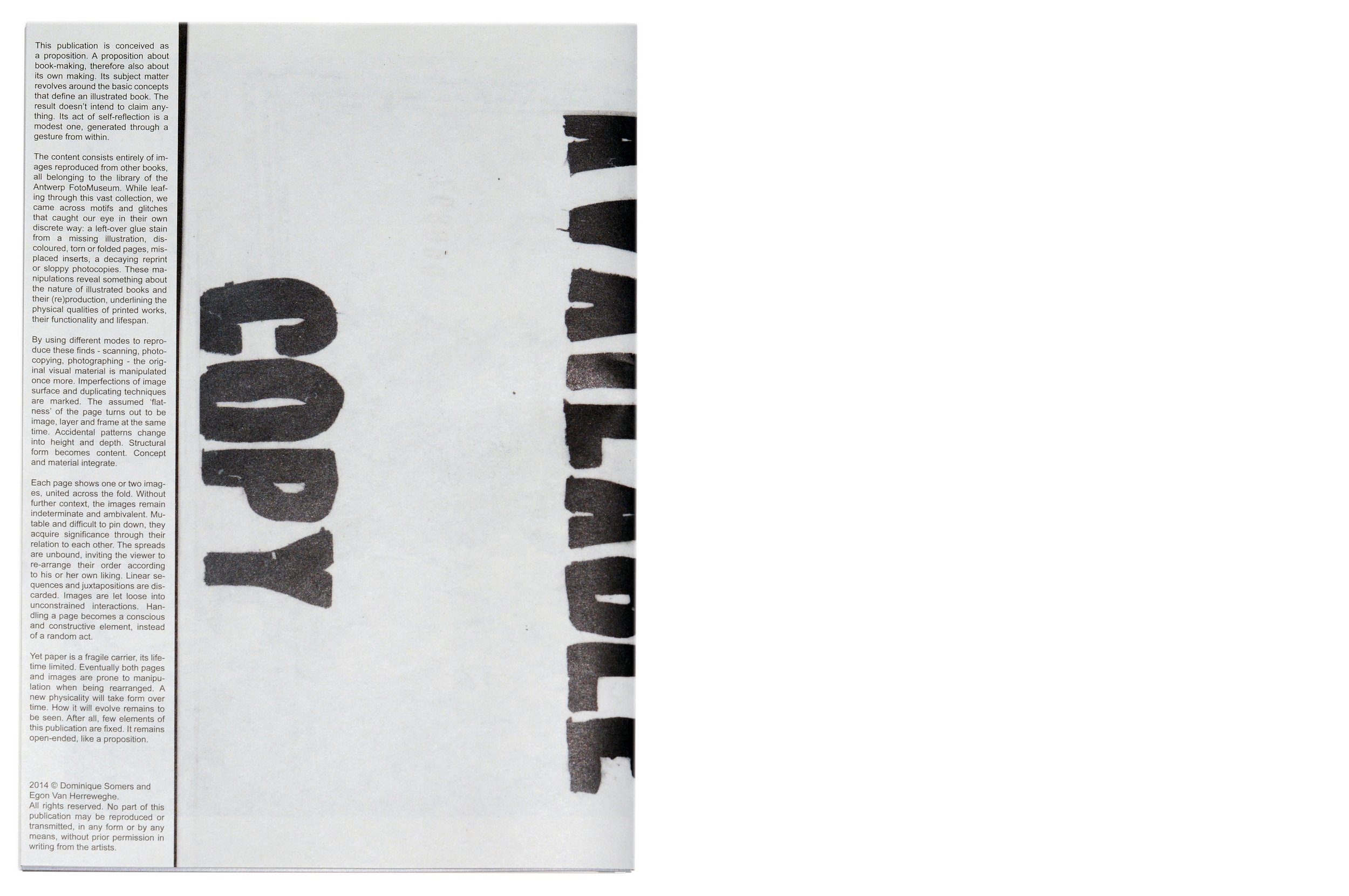Best Available Copy, self-published booklet, 2014.
32 pages, unbound, each 28 x 20 cm.
Self-published by Dominique Somers and Egon Van Herreweghe, the booklet Best Available Copy contains images reproduced from illustrated books that show the physical consequences of long-term use, copying and manipulation.
Back cover text:
This publication is conceived as a proposition. A proposition about book-making, therefore also about its own making. Its subject matter revolves around the basic concepts that define an illustrated book. The result doesn’t intend to claim anything. Its act of self-reflection is a modest one, generated through a gesture from within.
The content consists entirely of images reproduced from other books, all belonging to the library of the Antwerp FotoMuseum. While leafing through this vast collection, we came across motifs and glitches that caught our eye in their own discrete way: a left-over glue stain from a missing illustration, discoloured, torn or folded pages, misplaced inserts, a decaying reprint or sloppy photocopies. These manipulations reveal something about the nature of illustrated books and their (re)production, underlining the physical qualities of printed works, their functionality and lifespan.
By using different modes to reproduce these finds - scanning, photocopying, photographing - the original visual material is manipulated once more. Imperfections of image surface and duplicating techniques are marked. The assumed ‘flatness’ of the page turns out to be image, layer and frame at the same time. Accidental patterns change into height and depth. Structural form becomes content. Concept and material integrate.
Each page shows one or two images, united across the fold. Without further context, the images remain indeterminate and ambivalent. Mutable and difficult to pin down, they acquire significance through their relation to each other. The spreads are unbound, inviting the viewer to re-arrange their order according to his or her own liking. Linear sequences and juxtapositions are discarded. Images are let loose into unconstrained interactions. Handling a page becomes a conscious and constructive element, instead of a random act.
Yet paper is a fragile carrier, its lifetime limited. Eventually both pages and images are prone to manipulation when being rearranged. A new physicality will take form over time. How it will evolve remains to be seen. After all, few elements of this publication are fixed. It remains open-ended, like a proposition.















